Info
Subfamily: Pooideae
Genus etymology: Bromus = "food" [Greek] the ancient name for oats (Avena)
Species etymology: diandrus = "two anther" [Latin] refering to the florets
Photosynthetic type: C3 (cool season)
Nativity: naturalized - accidental
First recorded in Hawaiʻi: 1871
Map
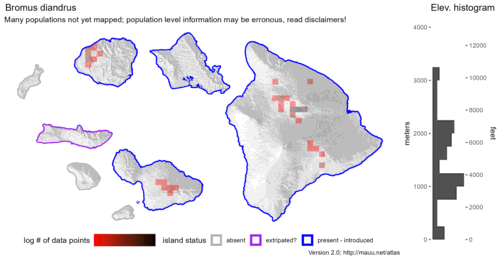

Inflorescence
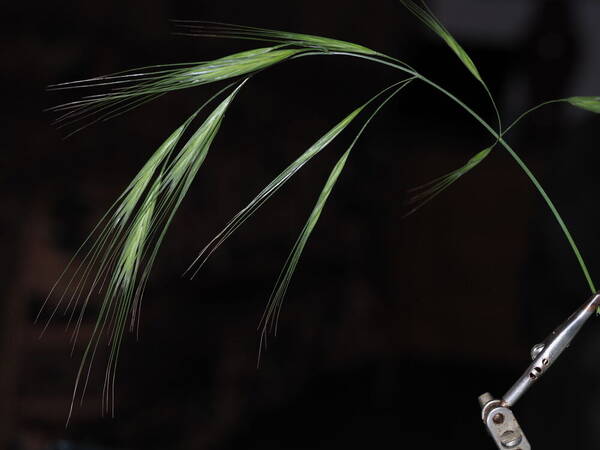
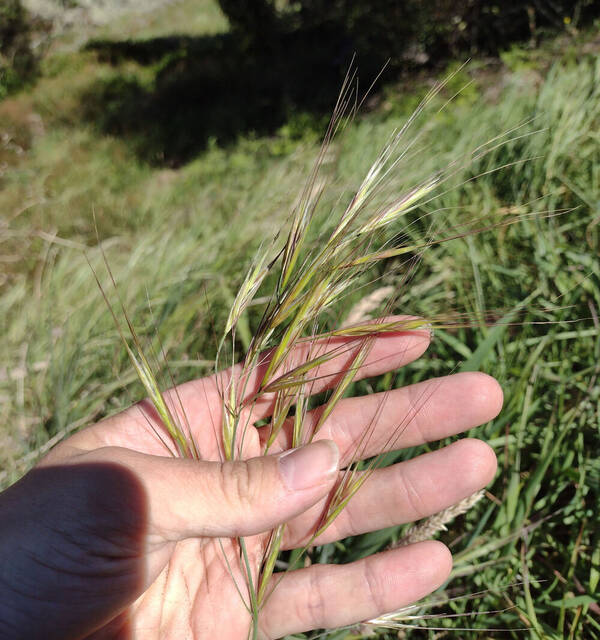
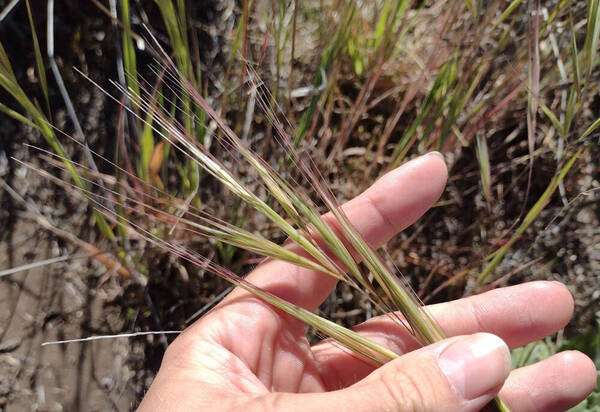
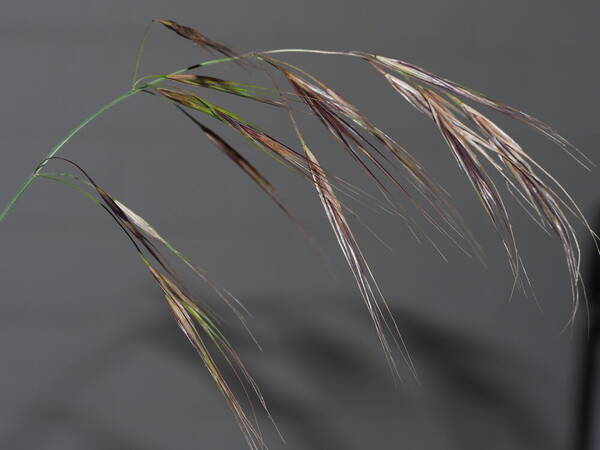
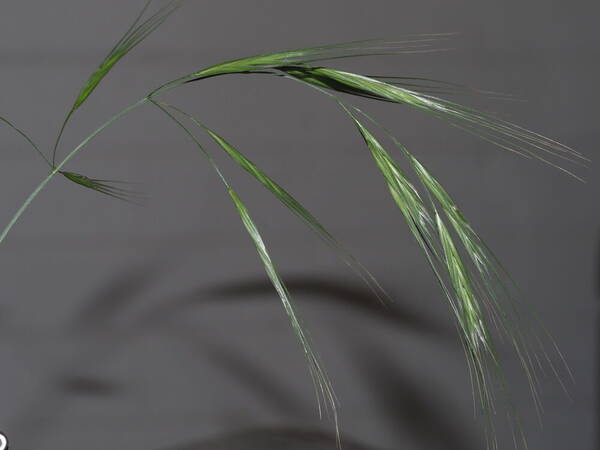
Plant
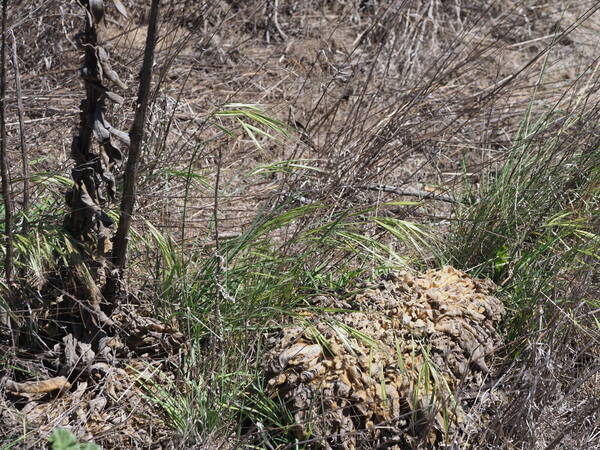
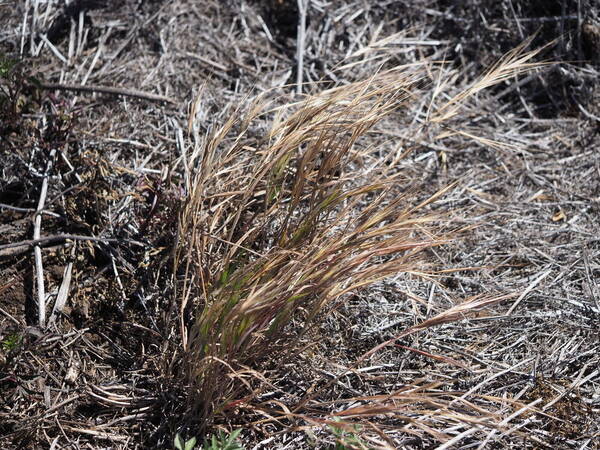
Habit
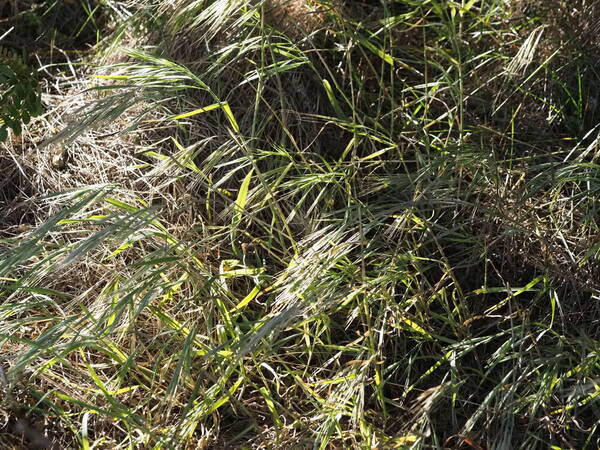
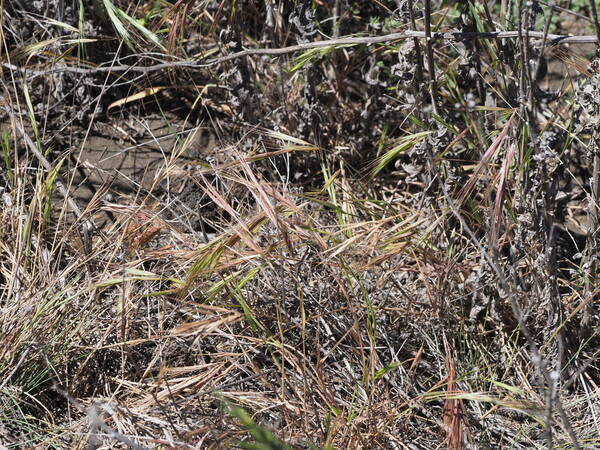

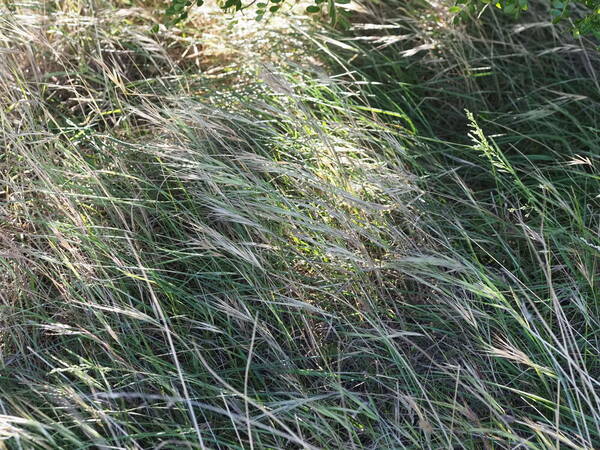
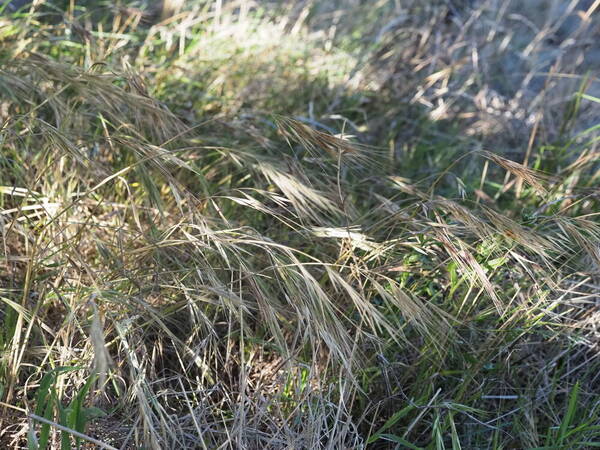
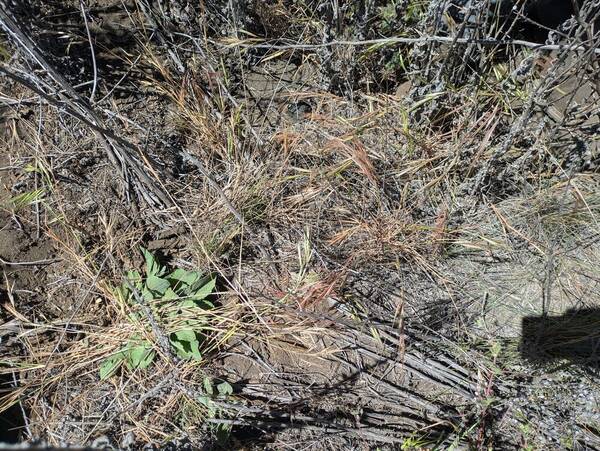
Spikelets
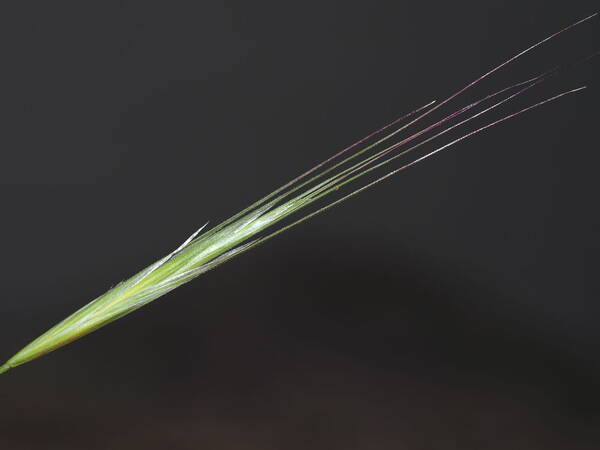
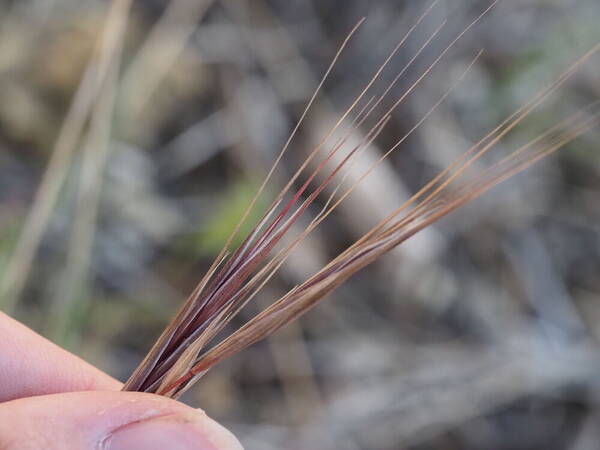
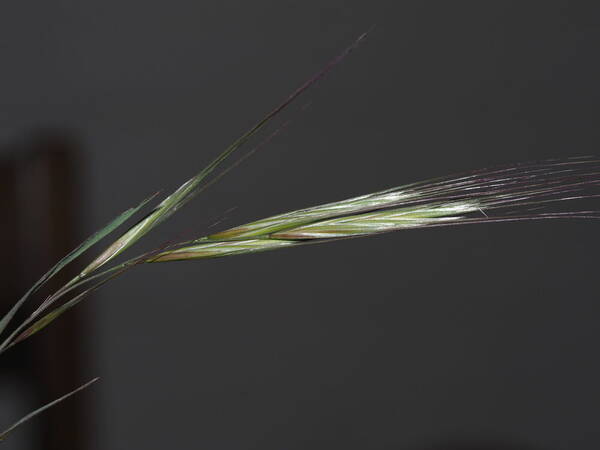

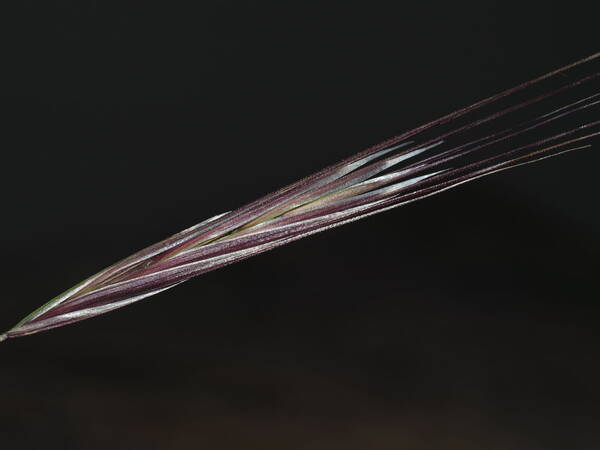
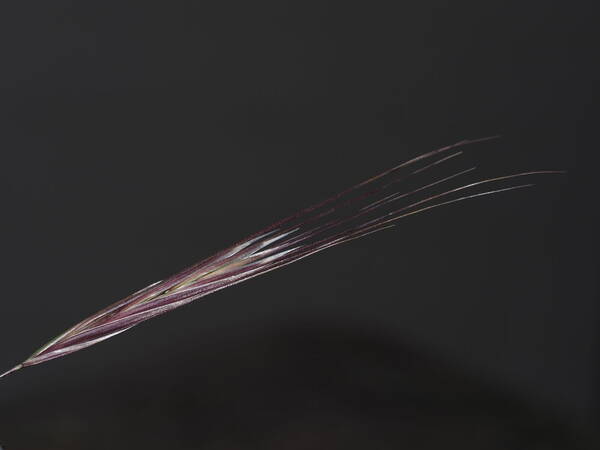
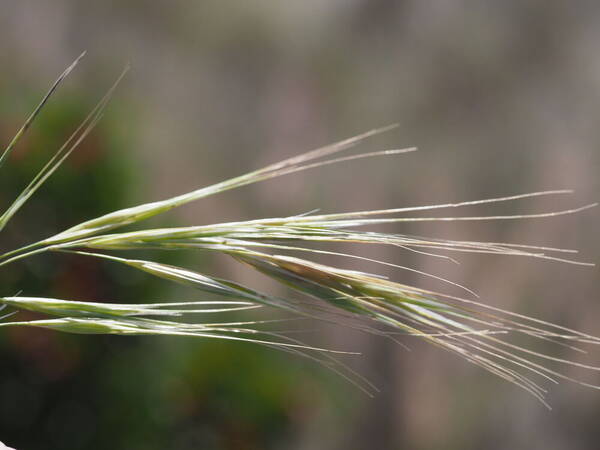
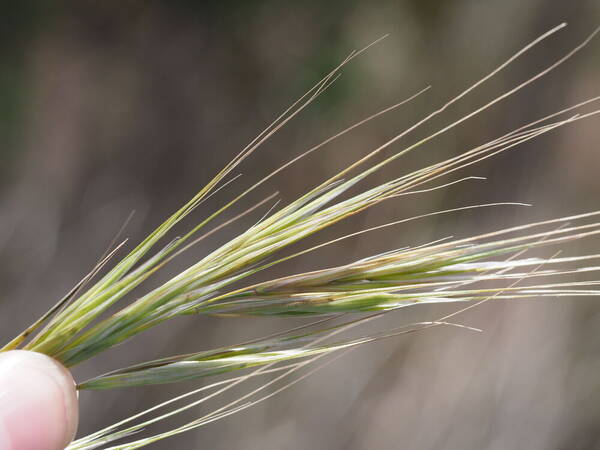
Collar
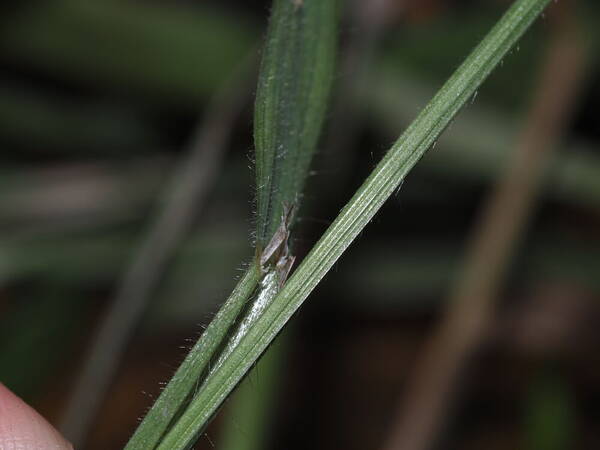
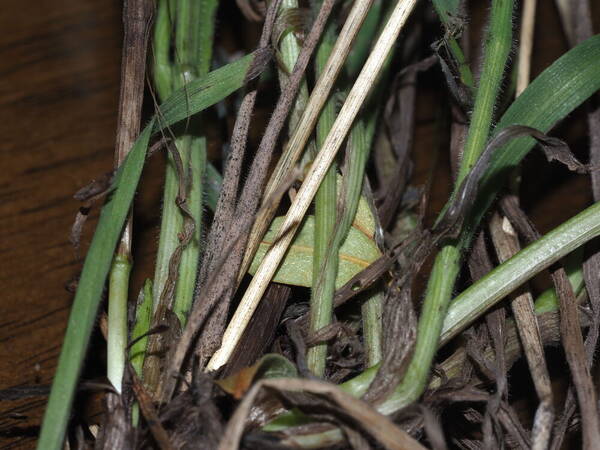
Description
Plants annual. Culms 20-90 cm, erect or decumbent, puberulent below the panicle. Sheaths softly pilose, hairs often retrorse or spreading; auricles absent; ligules 2-3 mm, glabrous, obtuse, lacerate or erose; blades 3.5-27 cm long, 1-9 mm wide, both surfaces pilose. Panicles 13-25 cm long, 2-12 cm wide, erect to spreading; branches 1-7 cm, stiffly erect to ascending or spreading, with 1 or 2 spikelets. Spikelets 25-70 mm, sides parallel or diverging distally, moderately laterally compressed, with 4-11 florets. Glumes smooth or scabrous, margins hyaline; lower glumes 15-25 mm, 1-3-veined; upper glumes 20-35 mm, 3-5-veined; lemmas 20-35 mm, linear-lanceolate, scabrous, 7-veined, rounded over the midvein, margins hyaline, apices bifid, acuminate, teeth 3-5 mm; awns 30-65 mm, straight, arising 1.5 mm or more below the lemma apices; anthers 0.5-1 mm. 2n = 42, 56.
(Description source: Barkworth, M.E., Capels, K.M. & Long, S. (eds.) 1993. Flora of North America, north of Mexico. Volume 24. Magnoliophyta: Commelinidae (in part): Poaceae, Part 1. Oxford University Press, New York. 911 pp. http://floranorthamerica.org/Bromus_diandrus )
Annuals; culms 4-7(-9) dm tall, solitary or sparsely tufted, pubescent for ca. 15 cm | below panicle. Sheaths 2-10 cm long, pilose; ligule 2-4(-5.5) mm long, membranous, erose-lacerate; blades flat, 2-6(-8) mm wide, sometimes involute, pilose, auricles absent. Inflorescences paniculate, (7-) 10-20 cm long, open, the branches elongate, erect or spreading, sometimes the lowermost reflexed; spikelets (3)4-6(-8)-flowered, (28-)33-40(-43) mm long; glumes scabrous, linear to narrowly lanceolate, first glume 13-18(-22) mm long, 1(-3)- nerved, second glume 20-25(-28) mm long, 3-nerved; lemmas (22-)25-30 mm long, 1- 1.5 mm wide in side view, scabrous to puberulent, the narrow apical teeth 3-6 mm long, awns (30-)35-60 mm long; palea slightly shorter than lemma, ciliate on the 2 keels, adhering to caryopsis. Caryopsis golden brown, narrow, 10-15 mm long. [2n = 28, 42, 56, 70.]
(Description source: O’Connor, P.J. 1990. Poaceae, pp. 1481–1604. In: Wagner W.L., Herbst D.R. & Sohmer S.H. (eds.)., Manual of the flowering plant of Hawaiʻi. Vol. 2. University of Hawaii Press & Bishop Museum Press, Honolulu )